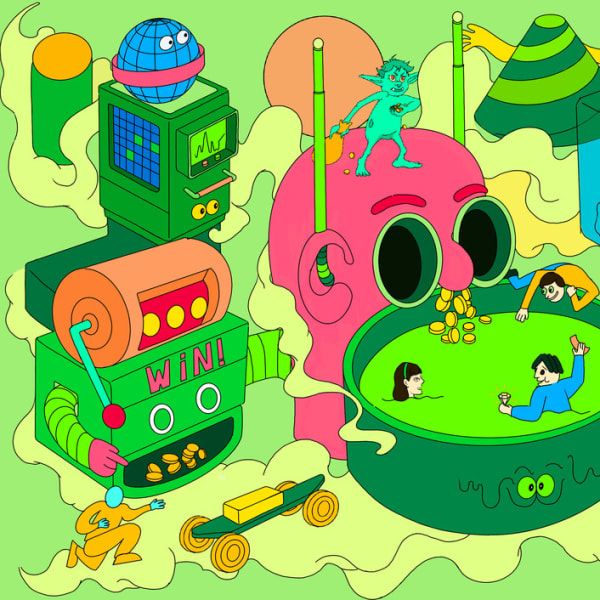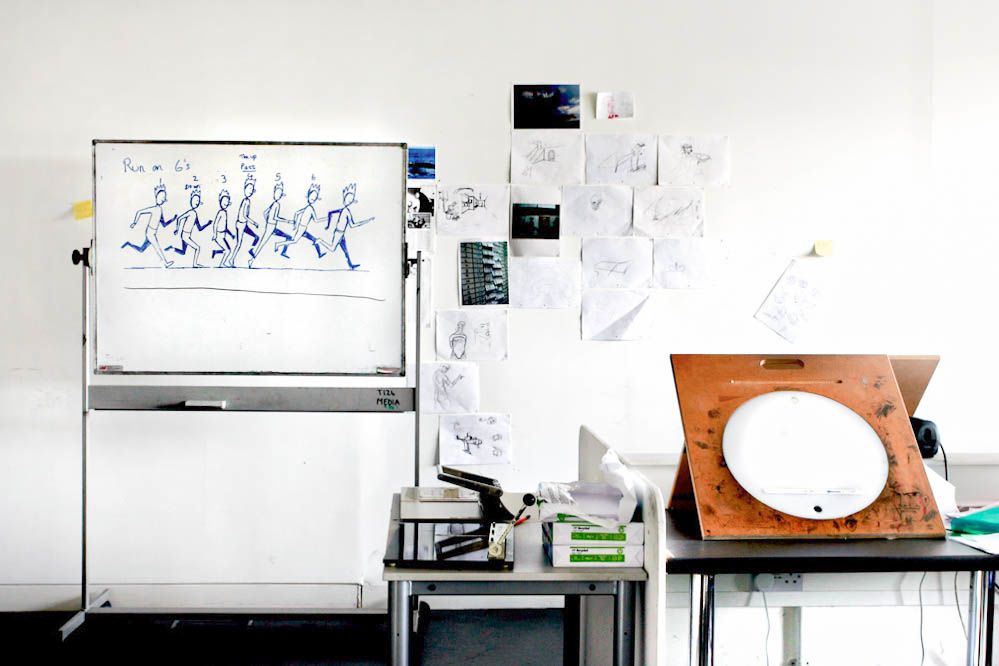
Top 5 types of animation styles

- Written byCarys Thomas
- Published date 09 December 2021

According to recent research, the global animation market size is expected to hit around $642.5 billion by 2030. The industry is growing rapidly, and recent technological advancements have meant that skilled animators are in high demand.
Animators are responsible for bringing images to life and transforming them into exciting sequences that work by creating an illusion of movement. Animation has an important role in the media and entertainment industry and is today used for all kinds of purposes in many different fields, including film, TV, marketing, gaming and education.
If you’re interested in a career in animation, take a look at our guide on how to become an animator for some tips on how to get started. You’ll need to have an understanding of the history of animation and its different forms in order to identify what kind of work you’d like to make and which area you want to specialise in. This guide will give you an insight into 5 animation styles to help you find the best fit for you in this exciting and fast-growing field.
We'll also offer some useful advice for anyone hoping to break into the industry from UAL short course tutor Francesco de Manincor, a character and motion designer with extensive experience in visual storytelling, storyboarding and animation.
Finding your path
If you’re unsure about which type of animation you’d like to specialise in, Francesco recommends spending some time experimenting with different styles, techniques and approaches; "try different styles and techniques and don't be afraid to make mistakes. It’s a great way to learn and define what you like and want to do. Don’t let the tools, and particularly software, dictate what you create. Mix traditional, analogue and digital."
"If you want to work professionally you need skills beyond talent and creativity," says Francesco, "you need perseverance and stamina (animation takes a long time to produce). Believe in yourself even if you have doubts, which at times is quite normal, particularly for creative, sensitive, intelligent people. Talk to others, show your work and get feedback. Don’t be discouraged and develop resilience."
1# Traditional animation
Traditional animation, also known as cel animation, is the oldest form of animation. According to traditional style, an animator will meticulously hand-draw each frame on paper, which is then photocopied or retraced onto transparent acetate sheets called cels. Paint is applied and each cel is photographed one-by-one to produce an animated sequence.
This kind of animation was frequently used by Walt Disney Animation Studios in the production of many of their early films, including The Lion King (1994), Sleeping Beauty (1959) and Cinderella (1950). Traditional animation is a good choice for artists that enjoy working with traditional media, particularly paint and colouring pencils. It is, however, a lengthy process that requires considerable attention to detail to achieve the best results.
2# 2D animation
2D animation, also known as vector-based animation, is all about creating movement in a 2-dimensional space. Advancements in animation software have meant that 2D animation is now an increasingly accessible and popular choice for artists. Rather than sketching every frame, artists can significantly reduce production time and costs by using software such as Toon Boom Harmony, Adobe Animate and Adobe After Effects to manipulate images and speed up the process.
Examples of 2D animation are everywhere. You may notice this style on TV shows, video games, websites, mobile apps and feature films. Some well-known 2D animations for TV include The Simpsons, South Park, Rick and Morty and Family Guy.
Francesco is particularly inspired by Kitbull (2019), an animated short that was nominated for the Academy Award for Best Animated Short Film at the 92nd Academy Awards. "Although it’s made by a small Pixar team, visually it’s very different from their usual 3D look as it is mostly 2D animation," Francesco notes, "but it sticks to their core values: they are masters at emotional storytelling and engaging viewers very effectively. Since it’s a short, they have to establish the characters and their personalities quickly, and the writer/director Rosana Sullivan has done it extremely well. All the little details and secondary characters are contributing to the story, and the pastel-like visual style, together with the framing and use of light, really adds to the warm feeling and look, to add that extra quality touch."
3# 3D animation
3D or computer animation refers to the process of creating 3-dimensional moving images in a digital environment. Specialised animation software means that it is possible to use motion to bring characters, vehicles and props to life through 3D animation. Animated objects can be rotated and moved in the same way as real objects, creating a lifelike effect.
The process is often divided into three main stages, namely, modelling, layout and animation, and rendering, which each require planning and expertise.
During the modelling stage, objects and characters are created using a specific modelling tool or by scanning real objects into a computer. The aim is to capture unique personality traits and movements, which can be achieved by giving a character bones, skin weights and constraints that enable it to move in specific ways.
The layout and animation stage is focused on the creation of a set in which to place the object and involves consideration of factors like object size and location.
Finally, computer calculations generate the finished image using specialised software through a process known as rendering.
4# Stop motion
Stop motion animation is a technique that is achieved by capturing one frame at a time, using physical objects or props that are moved between frames. When the sequence of images is played back at rapid speed, an illusion of movement is produced. Clay figures or puppets with movable joints are often used in stop motion animation. Plasticine is an ideal choice of material as its flexibility means that it is easy to manipulate in order to replicate different movements and expressions.
Stop motion was often used as a form of special effects in live-action films but is now less common in light of advancements in 3D animation technology. There are many filmmakers, however, who continue to work extensively with stop motion, including Tim Burton and Henry Selick. Aardman Animations are also known for their use of stop motion animation in the creation of many celebrated characters such as Morph and Wallace and Gromit.
5# Motion graphics
Motion graphics refers to a style of animation that utilises text as a major component to communicate a message. The focus here is on adding movement to specific graphic design elements that would otherwise be static to create impact. Shapes, objects and text can effectively be set in motion to create a powerful visual display. This type of animation can be particularly useful if you need to highlight specific content or express complex ideas visually in a way that is accessible to audiences.
Motion graphics may be used in the development of video titles, logo graphics, social media applications and digital marketing strategies. The title sequence of Hitchcock’s classic film, Psycho (1960), is a great example of this style and illustrates how elements like sound, motion and graphic design can work in harmony to create impact.
Learn the fundamentals of the Adobe Illustrator software and explore different types of animation styles with our Adobe Illustrator Beginners Short Course.
If you’re interested in learning more about the art of animation, take a look at our short courses on the subject.
We also offer animation courses for young artists. Check out our Animation for 16 to 18 Year Olds Short Course here.